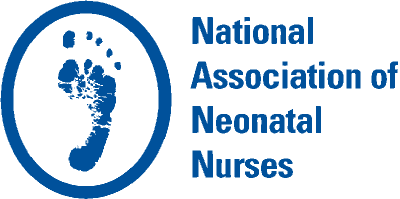Feature
Kangaroo Care Practice in the NICU
Karen Stadd, DNP MSN CRNP
The neonatal intensive care unit (NICU) environment has changed over decades to protect and promote neonatal development. For example, single-patient rooms successfully have minimized noxious environmental conditions and improved the delivery of family-centered care (Al-Motlaq, 2017). However, the NICU remains a stressful environment for growing premature and full-term infants, who immediately are separated from their parents after birth. Although this separation is warranted for neonatal survival, it often continues throughout the infant’s hospitalization.
The American Academy of Pediatrics described the incubator as a toxic environment for growing premature and full-term infants (Ludington-Hoe, 2013). Affected neonates trying to survive in this unnatural habitat often are denied vital parental physical contact. However, parents in the NICU can provide physical contact safely during the evidence-based practice of kangaroo care (KC), defined as skin-to-skin or chest-to-chest contact between an unclothed infant and their parent’s bare chest. The ventral skin-to-skin contact stimulates oxytocin release to modulate neurologic and physiologic changes in both the infant and KC provider. Other advantages include enhanced thermoregulation, physiologic stability, increased milk supply, improved growth, lower infection rates, better pain management, improved bonding, and decreased hospital length-of-stay duration (Moore, 2014). Recent evidence suggests that long-term benefits of KC include larger cerebral volumes, decreased motor functional deficits, increased autonomic functioning, and attenuated stress responses (Charpak et al. 2017; Feldman, Rosenthal, & Eidelman, 2014).
Interrupting the process of attachment has been associated with maternal withdraw secondary to depression, anxiety, and guilt from having an infant in the NICU. Subsequently, the psychological well-being of parents in the NICU can have long-term effects on later childhood development and behaviors (Charpak et al., 2017). KC has decreased separation and associated health disparities for both infants and parents. The positive social implications of KC include decreased rates of maternal depression and risk for child abuse (Flacking et al., 2012).
Despite the steady increase of KC practice in the United States, NICU nurses remain inconsistent with this practice, especially among vulnerable critically ill neonates (Moore, 2014). KC is either denied or delayed until hospitalized neonates are bigger, older, and more stable. A national survey validated that busy units with a higher acuity level may limit or avoid KC practice secondary to nursing perceptions and competency with this skill (Engler et al., 2002). The researchers indicated that 80% of NICU nurses were fearful of intravenous and arterial catheter dislodgement, 77% were fearful of accidental extubation, and 16% were concerned with added time constraints with KC practice. However, Ludington-Hoe (2011) argued that nurses’ workload is decreased during KC compared with incubator care because it improves physiologic stability and sleep. A multitude of studies, clinical guidelines, and safety criteria have since emerged to support the evidence-based practice of KC in both term and preterm infants in the NICU.
In a study of five partner hospitals, the March of Dimes Family Support Program concluded that only 8% of NICU staff reported routine KC practice (Cooper et al., 2014). Ambivalent feelings often were attributed to staff’s concerns for patient safety during infant manipulation and transfer. Similarly, another national survey revealed that 73% of parents with extubated infants were offered opportunities for KC, compared with 45% of parents with intubated infants (DiMenna, 2006). Current evidence supports the ease, safety, and physiological outcomes of KC for ventilated infants weighing less than 1,000 grams (Carbasse et al., 2013). Furthermore, an established protocol exists for intubated preterm infants using a two staff–member standing transfer method to minimize risks of extubation, line dislodgement, and physiological disruption (Ludington-Hoe, Ferreira, Swinth, & Ceccardi, 2003). Thus, KC can be practiced safely with ventilated infants if a suitable transfer technique is applied.
Research has demonstrated that KC practice in the NICU should occur sooner and more frequently for optimal effects (McGowan, Naranian, & Johnston, 2017). When KC practice does occur, it varies in duration from a few minutes to hours. To promote neonatal brain development, evidence-based guidelines recommend at least 60 minutes of uninterrupted KC during a full sleep cycle (Ludington-Hoe, 2011).
Variability and inconsistency with practice continues because the nursing decision to initiate KC is based on individual experience and clinical judgment. Therefore, NICU nurses consistently are recognized as an obstacle for advocating for and implementing KC practice (Moore, 2014). If a NICU staff member believes KC is unsafe for their patient, they relay an apprehensive perception to the parent. This behavior was portrayed in a national survey showing that 87% of KC practice was initiated by a parent request rather than the bedside nurse (Engler et al., 2002). Offering KC is within the nurse’s scope of care as a patient advocate and parent educator.
The practice of KC not only benefits hospitalized neonates, but also the parents who are abruptly separated from their infant at birth. Consequently, nursing discomfort with KC not only culminates in decreased patient advocacy for practice, but also decreases promotional parent education needed to enhance parent readiness (Kymre & Bondas, 2013). The March of Dimes NICU Family Support Program found that earlier and more frequent KC occur when educating both parents and nurses about the benefits and feasibility of KC (Cooper et al., 2014). According to Chan, Labar, Wall, and Atuna (2016), parents who understood the value of KC were more knowledgeable and confident to request KC early in their baby’s hospitalization. Therefore, nurses must advocate for a shared responsibility in caring for hospitalized neonates by educating parents about the benefits and feasibility of early and frequent KC practice.
In conclusion, neonatal nurses uniquely influence the ongoing infant-parent dynamics (Kymre, 2014). To reduce gaps in knowledge and practice, NICU nurses require education and training about the feasibility and benefits of safe KC practice in vulnerable neonates. Practice change requires supervised, reinforced, and simulated hands-on training programs, which have been implemented successfully and recommended for nursing education and competencies (Hendricks-Munoz & Mayers, 2014). Literature also has suggested that KC become a nurse competency training skill to improve confidence with practice (McGowan et al., 2017), and certification training programs successfully have complemented continuing education for KC (Almutairi & Ludington-Hoe, 2016). Ultimately, NICU nurses must be informed about and cognizant of available continuing education courses that provide KC certification.
References
Al-Motlaq, M. A. (2017). Traditional open bay neonatal intensive care units can be redesigned to better suit family centered care application. Journal of Neonatal Nursing, 24(3), 159-162. doi:10.1016/j.nn.2017.11.016
Almutairi, W. M., & Ludington-Hoe, S. M. (2016). Knowledge and skills competence effects of kangaroo care education. Journal of Continuing Education in Nursing, 47(1), 518-524. doi:10.3928/00220124-20161017-11
Carbasse, A., Kracher, S., Hausser, M., Langlet, C., Benoit, D., & Donato, L. (2013). Safety and effectiveness of skin to skin contact in the NICU to support neurodevelopment in vulnerable preterm infants. The Journal of Perinatal & Neonatal Nursing, 27(3), 255-262. doi:10.1097/JPN.obo13e1829dc349
Chan, G. J., Labar, A. S., Wall, S., & Atuna, R. (2016). Kangaroo mother care: a systematic review of barriers and enablers. Bulletin of The World Health Organization, 94(2), 130-141. doi:10.2471/BLT.15.157818
Charpak, N., Tessier, R., Ruiz, J., Hernandez, J., Uriza, F., Vilegas, J., . . . Maldonado, D. (2017). Twenty-year follow up of kangaroo mother care versus traditional care. Pediatrics, 139(1), 1-10. doi:10.1542/peds.2016-2063
Cooper, L., Morill, A., Russell, R., Gooding, J., Miller, L., & Berns, S. (2014). Close to me: enhancing kangaroo care practice for NICU staff and parents. National Association of Neonatal Nurses, 14(6), 410-423. doi:10.1097/ANA.00000000000014
DiMenna, L. (2006). Considerations for implementation of a neonatal kangaroo care protocol. Neonatal Network, 25(6), 405-412. doi:10.1891/0730-0832.25.6.405
Engler, A. Ludington-Hoe, S., Cussonn R., Adams, R., Bahnsen, M., Brumbaugh, E., . . . Williams, D. (2002). Kangaroo care: national survey of practice, knowledge, barriers, and perceptions. Maternal Child Nursing, 27(3), 146-153. Retrieved from http://www.ncbi.nlm.nih.gov/pubmed
Feldman, R., Rosenthal, Z., & Eidelman, A. (2014). Maternal-preterm skin-to-skin contact enhances child physiologic organization and cognitive control across the first 10 years of life. Biological Psychiatry, 75(1), 56-64. doi:10.1016/j.biopsych.2013.08.012
Flacking, R., Lehtonen, L., Thomson, G., Axelin, A., Ahlqvist, S., Moran, V., . . . Dykes, F. (2012). Closeness and separation in neonatal intensive care. ACTA Paediatrica, 101, 1023-1037. doi:10.1111/j.1651-2227.2012.02787.x
Hendricks-Munoz, K., & Mayers, R. (2014). A neonatal nurse training program in kangaroo mother care (KMC) decreases barriers to KMC utilization in the NICU. American Journal of Perinatology, 31(11), 987-991. doi:10.1055/s-0034-1371359
Kymre, I. G. (2014). NICU nurses’ ambivalent attitudes in skin-to-skin care practice. International Journal of Qualitative Studies on Health and Well-Being, 9(1), 232-240. doi:10.3402/ghw.v9.23297
Kymre, I., & Bondas, T. (2013). Balancing preterm infants’ developmental needs with parents’ readiness for skin-to skin care: a phenomenological study. International Journal of Qualitative Studies in Health Well-being, 8, 1-9. doi:10.3402/qhw.v8i0.21370
Ludington-Hoe, S. (2011). Thirty years of kangaroo care science and practice. Neonatal Network,30(5), 357-362. doi:10.1891/0730-0832.30.5.357
Ludington-Hoe, S. (2013). Kangaroo care as neonatal therapy. Newborn &Infant Nursing Reviews, 12, 73-75. doi:10.1053/j.nainr.2013.003.004
Ludington-Hoe, S., Ferreira, C., Swinth, J., & Ceccardi, J. (2003). Safe criteria and procedure for kangaroo care with intubated preterm infants. Journal of Obstetrical and Gynecological Neonatal Nursing, 32, 579-88. Retrieved from http://www.ncbi.nlm.nih.gov/pubed
McGowan, J., Naranian, T., & Johnston, L. (2017). Kangaroo care in the high-technology neonatal unit: exploring evidence-based practice, policy recommendations and education priorities in Northern Ireland. Journal of Neonatal Nursing, 23(4), 174-179. doi:10.1016./j.jnn2017.02.00
Moore, H. (2014). Improving kangaroo care policy and implementation in the neonatal intensive care. Journal of Neonatal Nursing, 21,157-160. doi:10.1016/j.jnn.2014.11.001


